Classroom Economy System: How Money Talks in the Classroom
Have you ever felt like getting students excited about meeting expectations is a bit like herding cats? Trust me, I get it. There are many tried and true tricks out there for us to use, from class points, BINGO card awards, and the thrilling mystery behind those post-it-covered surprises. But you know what’s been a rockstar in my classroom? The good old classroom economy system. It’s been my secret for teaching responsibility, money smarts, and giving a positive boost to classroom vibes. Today, I’m pumped to share what I’ve learned – the hits, misses, and all the fun – to help you make your classroom the most rewarding spot in school.
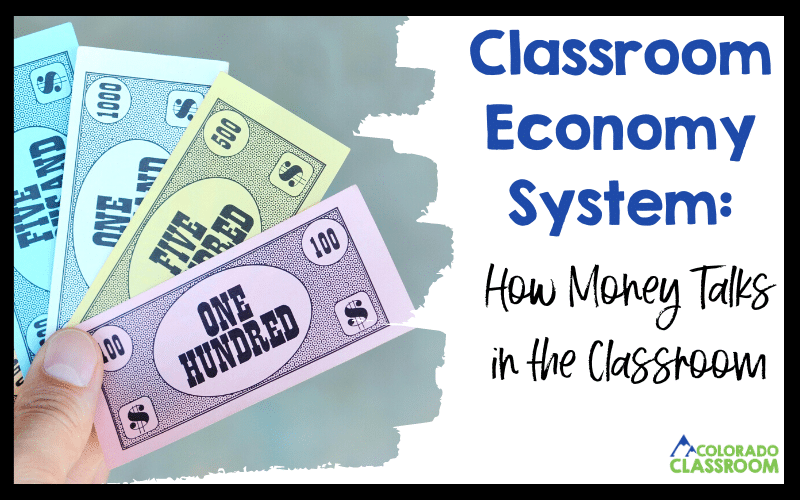
Benefits of A Classroom Economy System
Before we get into the nitty-gritty, you might be wondering how a classroom economy system can help you and your students. This is an important question to ask, because as with any rewards system – this one will take some effort on your part. I can assure you though, the effort is worth it! Over the years, I found that using a classroom economy system like this one helped students grow in responsibility while illustrating the value of a dollar. Think of this system as an opportunity to improve behavior and performance at school, but also to offer a glimpse into the world of money management. Ready to learn more? Let’s chat about how this system came to be!
Getting Crafty with Classroom Economy System Cash
Let’s take a stroll down the lane of creativity – currency style! So, to give you a little background, my fantastic team of four sixth-grade teachers, including yours truly, embarked on a quest to find the perfect classroom currency for our classroom economy system. We tested the waters with various materials like tickets and beans, searching for that golden ticket to engage our students. After some trial and error, we found our winner – good old paper money.
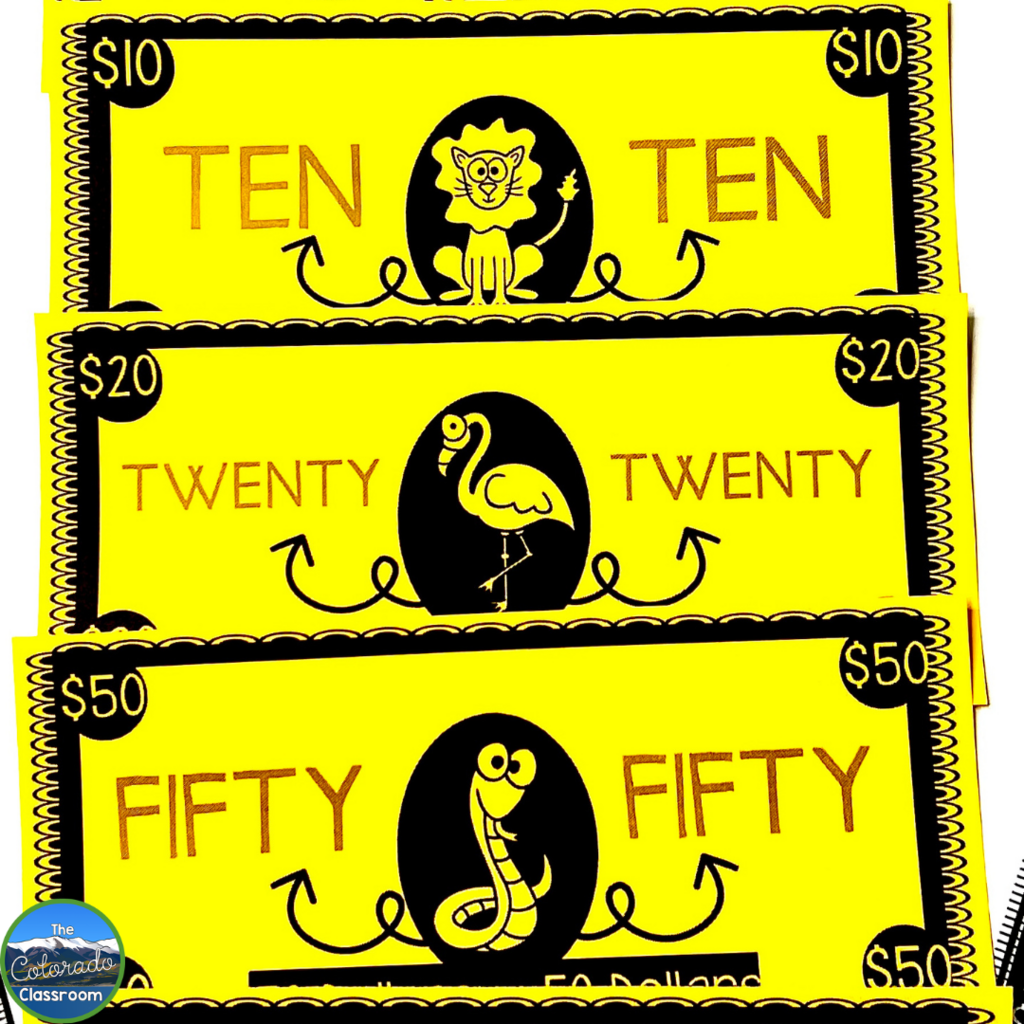
Now, here’s where it gets really fun. Each of us got to unleash our inner artist and design our very own bills. I rolled with “Turtle Tender.” Why? Because who can resist the charm of a cute turtle? My bill featured a delightful clip art turtle proudly displaying the school years, my name, and those all-important denominations.
But the creativity didn’t stop there. Oh no! My teaching pals brought their A-game to the design table too. We had teachers that chose a generic currency name like “Star Bucks,” and others that connected their currency to their name like “Fraser Funds” and “Williams Wages.” Our bills became not just a transaction tool but a canvas for our personalities.
This happy discovery of tapping into paper money turned out to be fun for students, easy for teachers, and best of all… effective! So, if you’re thinking about diving into the realm of classroom currency for your classroom economy system, embrace the paper money route!
Bill Stacks and Letter Sorters to Organize Classroom Economy System
Before we dive into how to use this system, let’s chat about the practical piece of keeping track of all your paper money. Organization is a key component of a successful classroom economy system.
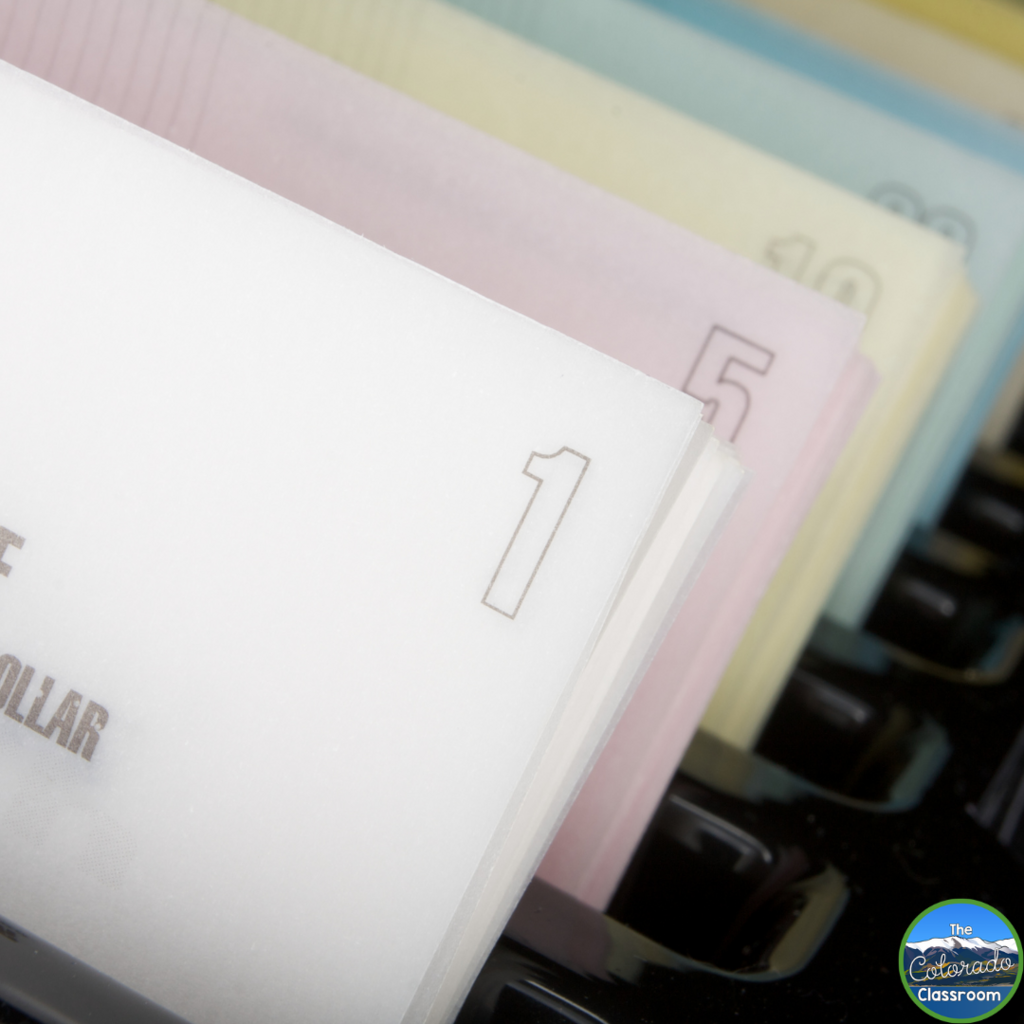
The teachers on the team and I crafted bills in all the regular denominations – ones, fives, tens, twenties, fifties, hundreds, and yes, even the elusive five hundreds. So, once we had our personalized bills in hand, the next mission was to keep them in check and ready for action.
As I was thinking about what would be the best way to keep all these bills organized and easily accessible, it hit me: my trusty letter sorter straight from the office supply store. It worked perfectly because each slot held a different bill denomination. It was so easy to keep everything organized and easily accessible.
When diving into the world of classroom currency, create your own currency, set up an easy organization system, and then you are ready to get started. It really is that easy!
Show Me the Money – Literally!
Alright, ready to see how this all works? This part of the classroom economy system is where the magic truly happens – handing out the cold, hard cash. At the dawn of each school year, we embarked on a mission to make our students feel like the financial maestros they were destined to become.
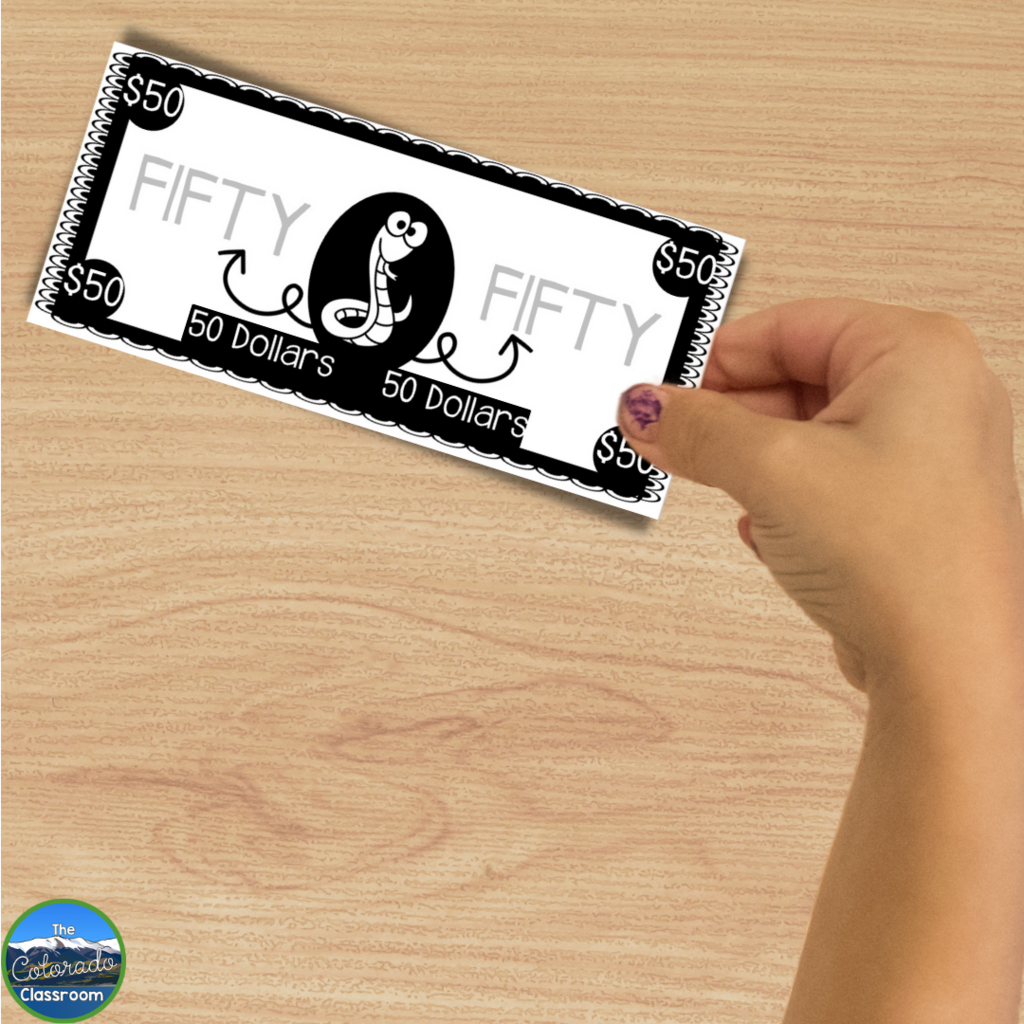
A crisp $50 bill is handed out to each student every week. Now, here’s the catch. It wasn’t a free pass to a candy shop because next came the fee collection phase that would bring their total down to around $22. Need a desk? That’ll be $5 a week. Fancy a locker? That’s $7 a week. We even factored in the essentials – electricity and gas to keep the classroom cozy, and yes, plumbing bills, too.
Why the tough love? It was our way of making them dip their toes into the financial pool their parents wade through daily. It wasn’t about making life difficult but about giving them a hands-on experience, a taste of responsibility. If you happen to teach math, it’s a great way to cover some of those personal financial literacy standards, too!
In the beginning, it took a little time because we truly wanted our students to learn and understand the concept of paying for necessities in the real world. At this age, so many kids don’t have a solid understanding of the value of money in real life. This definitely helps to establish this. Plan on about 30-40 minutes a week for the first 4-6 weeks. But trust me, the investment is worth it.
As the weeks rolled on and students understood they were paying for necessities, we started deducting that automatically and just handing out $22 per student.
So, when it comes to the classroom economy system, remember, it’s not just about the money. It’s about the lessons it carries. It’s about molding future adults who understand the value of a dollar and the responsibilities that come with it. All of those amazing life lessons, and you’ve only just begun!
Raises, Raises, Raises in a Classroom Economy System
Now, let’s take a look at something that kept the excitement buzzing for our classroom economy system, which was our quarterly cash boost. Like clockwork, every quarter, we’d toss in a little extra moolah, usually $5 per week. We all know the golden rule, but for the classroom economy system, I had a second golden rule. It was the class’s behavior that held the strings.
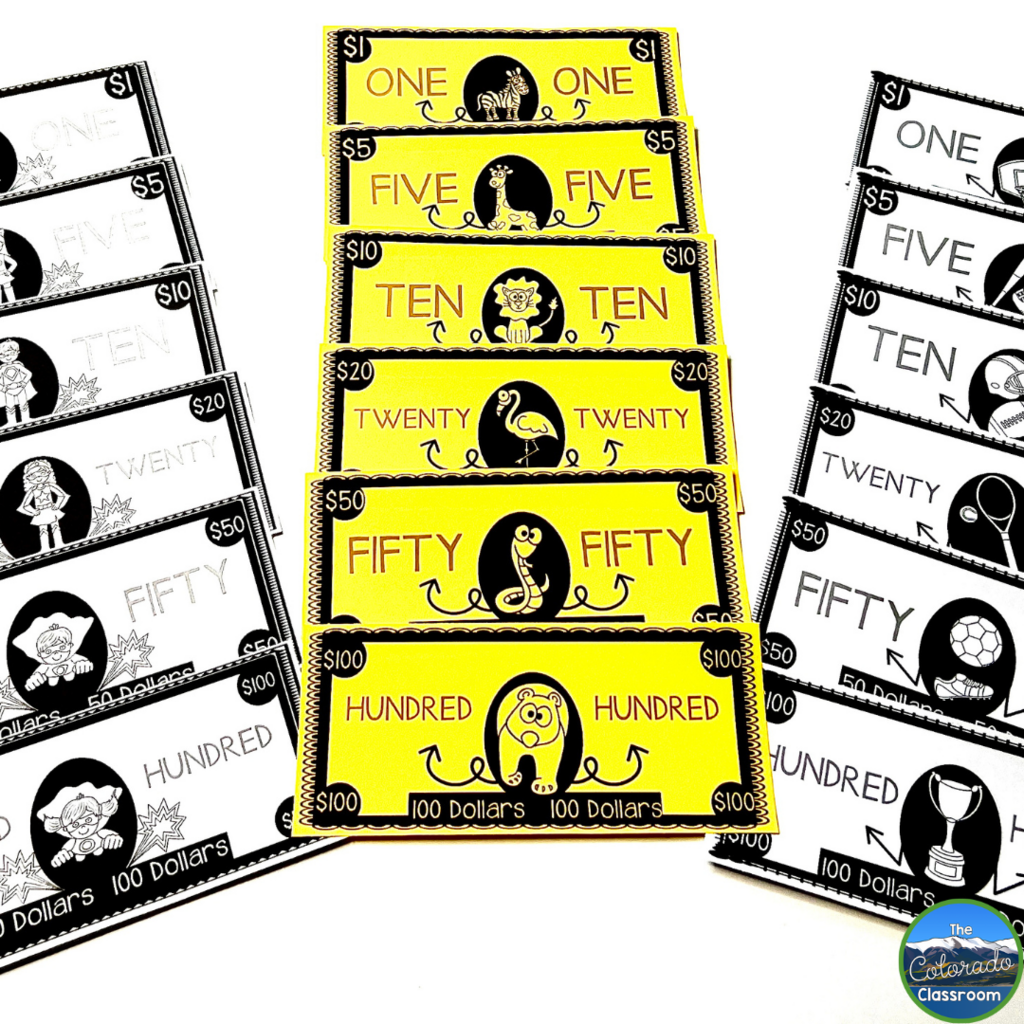
We kept it dead simple and fair. No backstage deals, no secret negotiations. A standard and equal raise across the board. None of that “Sandy, Tom, and Chris get $29 while the rest get $25, and oh, Becca, Madeline, and Percy, you get $23” drama. Don’t overcomplicate it! Trust me, trying to juggle those numbers would drive anyone batty in the long run. That being said, each class period could get a different amount – but everyone in that class received the same thing. The goal is to be able to facilitate the classroom economy without taking a lot of time and effort.
So, what was the secret to maintaining sanity? It was about ensuring every student knew they were getting a fair slice of the financial pie. No favorites, no funny business. I’d make it a point to gather them up and explain the why behind their raise. It became a mini pep talk, a moment of financial wisdom where I’d break down the logic behind the numbers. It was a chance to pinpoint some specific class goals for the future.
Equality and transparency are the real rockstars in the grand scheme of things. So, keep it simple, keep it fair, and your classroom economy system will be smooth sailing.
Classroom Economy System Rewards and Consequences Made Simple
Let’s dive into the nitty-gritty of rewards and consequences as we move through. These are the “bread and butter” of any successful classroom economy system. This is the piece that will help your students get the most out of this system and add a new level of interest, too!
When it comes to rewards and consequences, less is more. Trust me, you don’t want to overwhelm yourself or the students. Start small, like five rewards and five consequences. Think of it as dipping your toes into the water before cannonballing in. Some suggestions for rewards and fines are as follows:
Fines: Anything kids do that needs correction

- Using the Bathroom during a Lecture – $2
- Unprepared for Class – $5
- Talking out of Turn – $2
- Passing Notes – $10
- Throwing Objects – $10
Rewards: Reward, reward, reward because positive reinforcement is so powerful
- First 3-5 people ready – $2 or $5
- Following Directions – $2
- Helping Others Properly – $5
- Completing Class Jobs – $5-$25/week
- First three people to bring back signed paperwork – $10
Once you decide on your fines and rewards, make them known! I recommend writing them out on a large poster board for everyone to see. Consistency is the secret here. No one likes surprises when it comes to their hard-earned cash, right? If it’s on the list, stick to it. And don’t forget to follow through on what you publish.
And. . . don’t be afraid to add a new fine or reward to your list as the year goes on. I would not just add things for the sake of adding things. Instead, add fines and rewards as a way of tweaking classroom behavior. For example, if you are starting to see an increase in the number of people not turning in homework, then set up a fine. Seeing students rushing when it comes to handwriting, making their notes illegible? Consider adding a reward. Make it fit your classroom and your students.
Choose fines for behaviors or activities that are important to you and how your classroom will function. If you don’t mind a student getting up to go to the restroom, then that one probably shouldn’t be on your list. If you hate hunting down missing work, then consider adding a fine for late turn-in to yours. You have lots of flexibility when it comes to what you choose for both fines and rewards. The more you personalize this to your classroom and personal preferences, the easier it will be to remain consistent.
Pro-Tip: Always Be Prepared
Consistency is your co-pilot, and always having “money” on hand is your fuel. Imagine this scenario – a student nails a reward-worthy action, and you’re stuck scribbling IOUs on sticky notes. Total chaos, right? Trust me, you don’t want to go down that road. While in my classroom, I kept my money organizer handy, I also found that keeping some classroom currency slipped to my lanyard meant I was always prepared.
Keep the cash flow steady, and your classroom economy system will run smoother. Overall, keep it simple, stay consistent, and let the financial journey unfold with ease.
What’s All This Money For Anyway?
If you are going to use a classroom economy as part of your classroom management system, then you must have something in place that students can spend their money on that they are excited about! I’m pretty sure that if used solely as a way to teach kids about paying rent and utilities, it would lose its intrigue and effectiveness very quickly.
So, let’s dive into some of the different things students can use their class currency on.
1. Classroom Spending
Inside our classroom, students had a variety of ways to spend their money on buzz-worthy items. Choose items that students can purchase that you know they will want. These might be physical items like fancy pencils and pens, or experiences like a ‘No Homework Pass’ or ‘Add 5 Points to a Test’. Don’t underestimate the power of working with other teachers, too. Opportunities to assist the librarian or be an office runner are worth lots of class currency! And. . . if you can’t think of ideas, just ask your students. Ask them what they would like to spend their money on then consider adding some of those ideas to your list.
You can also encourage teamwork and partnership by having prices for things that would require multiple people or the entire class to pool their money. It’s a great way to build classroom community and teamwork. Just choose items you would like to offer that would involve more than one student or the entire class. Some examples of these rewards are listed below.
- Lunch with a friend in the classroom: $50
- Lunch from fast food restaurant: $100
- Pizza Party: $350
- Dance/Music Party: $250
- Game Day: $300
As you roll out your spending options make sure to put a shopping system in place. I would absolutely NOT allow students to just redeem their currency any time they want. You’ll never have a chance to teach. Instead, you could use a purchase form that must be filled out and turned in with money. You then let students know that their purchases will be completed within 2 school days (or whatever amount of time you choose) so that you can fit it into your schedule. Another option would be opening the class store once a month on a Friday. Students could complete an independent review activity during class while you focused on the class store. Whatever you choose just make it something doable for you.
2. Class Auction
Our classroom economy wasn’t just about earning and spending from a designated set of items. There’s one more piece of this puzzle that will add a new layer of fun – the thrill of the auction! At the end of each quarter, our students, with parent permission, brought in items from home that they wanted to get rid of. They were allowed to auction these items off and they earned the money from the auction. Here’s how it worked:

About a week before the auction, I would let students know of the auction date and the auction rules. Students were given the green light to bring in one or two items to auction off. Each item had to come with a note from their parents stating the item and that the student had permission to get rid of it. We couldn’t have students accidentally bidding off family heirlooms, could we?
The auction day was chaos, in the most delightful way. The first auction of the year came with a lesson on auctions. I taught students what an auction was, how they worked, and how to bid.
To start the auction, names were pulled from a jar to determine the order. Students took center stage, presenting their items with all the charisma of seasoned auctioneers. Bidding wars ensued, and the highest bidder walked away with the coveted item. The seller earned the money from the sale of their item.
Sometimes students brought in a candy bar or a soda, but most of the time, it was a toy or game they were ready to bid farewell to. These auctions became a highlight of our classroom activities. Students loved the chance to earn extra money that they could later use on a reward they wanted.
Teacher Tip: If you teach language arts, you could connect descriptive writing to the auction by having students write about the item they are putting up for auction. It’s a great way to connect the power of good descriptive writing to a real-life situation.
3. Paying for Field Trips
Hold on tight because our classroom economy system wasn’t confined to four walls. With our administrators’ blessings, students paid to participate in field trips. Before you email me that this is so unfair, please keep reading.

Most field trips were a steal at $10. Remember, students were receiving about $22 each week! These field trips were educational and curriculum-based and one we wanted all students to attend, and they did. But this added an extra level of budgeting and prioritizing to the classroom economy experience.
At the end of every year, we had a field trip to a big amusement park! This field trip was 100% pure fun and entertainment – not standards-based. This wasn’t your average field trip. It was a full-day celebration of the school year. The amusement park field trip came with a hefty price tag of $250. Yep, you read that right. It wasn’t just about handing over the dollars, but it also became a lesson in saving up, planning ahead, and making those classroom dollars count.
Right from the first week of school, the students were told about the end-of-year field trip and its price tag. Reminders echoed throughout the year, a constant drumbeat of financial responsibility. They could pay at any time, and we kept a meticulous checklist to track who was on board and who might need a nudge.
Now, let’s pause and talk about the elephant in the room. Why the hefty price tag? Well, it wasn’t just about the money. This decision sprouted from a heart-to-heart with the administration, and our admin team was all in. The $250 investment wasn’t about exclusion. It was about trust and responsibility. Students who embraced the classroom economy system demonstrated commitment and earned their keep found themselves at the front of the line for this grand adventure.
Sure, it meant two to eight students might miss out each year, but the criteria were clear. This wasn’t about punishment. It was about rewarding those who had embraced the financial journey and the responsibilities of sixth-grade, while ensuring that the field trip represented the values of our school. When you consider the fact that each student earned well over $700 during the year ($22 per week, not counting raises or behavior payments), every student easily had the opportunity to attend.
Wrapping Up Classroom Economy Systems
The idea behind a classroom economy system is that of rewards, and it mimics real life more than you can imagine. While we hope for intrinsic good behavior, let’s face it – rewards are a universal language. Rewards drive us all in one way or another. Ever opened an app to scan a purchase at your favorite fast-food restaurant in order to get points? Reward system. Have you installed one of those insurance devices that lowers your car insurance rate based on your driving? Reward system. Reward systems are an active part of our society and not just for kids. Just like adults work for kudos, pay raises, or more time off, our students are navigating the same reward-driven world.
Once the classroom economy system was in use, another benefit became clear. Discipline became easy. It was less of a personal, subjective task and just part of the system. No longer was discipline a murky territory full of personal conflicts. I discovered that even for those students who often found themselves on the disciplinary radar, our relationship remained intact. Why? Because they understood it wasn’t a clash of personalities. More than once, a student would realize what they had done and just hold out their penalty. It was the system, and it wasn’t about me vs. them – and that’s a huge obstacle to overcome.
Ready to Try a Classroom Economy System
Now, if you’re itching to embark on your own classroom economy adventure, you’re in luck. This blog post lays it all out for you. You can get started today just by following the information here. There’s some currency creation and planning that needs to be done before you unveil it to your students, but you can do it!
Looking for a ready-to-use option that is already done? I’ve got a larger-than-life version of the Class Economy System waiting for you in my TPT store.
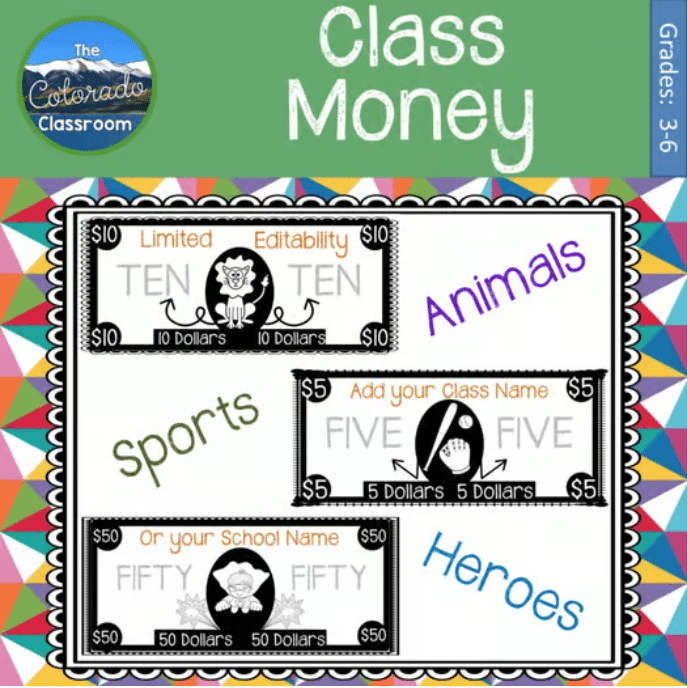
Looking for More?
Be sure to check out these posts to learn more about classroom management in upper elementary and middle school classrooms!
- Embracing the Magic of Teaching Routines
- Starting a New Semester off Right
- Afternoon Tricks to Ease Your Teaching
Save for Later
Remember to save this post to your favorite classroom management Pinterest board to return when you are ready to set up your classroom economy system!


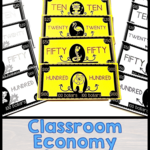
Pingback: Classroom Currency: Starting a Mini-Economy at School with Friends